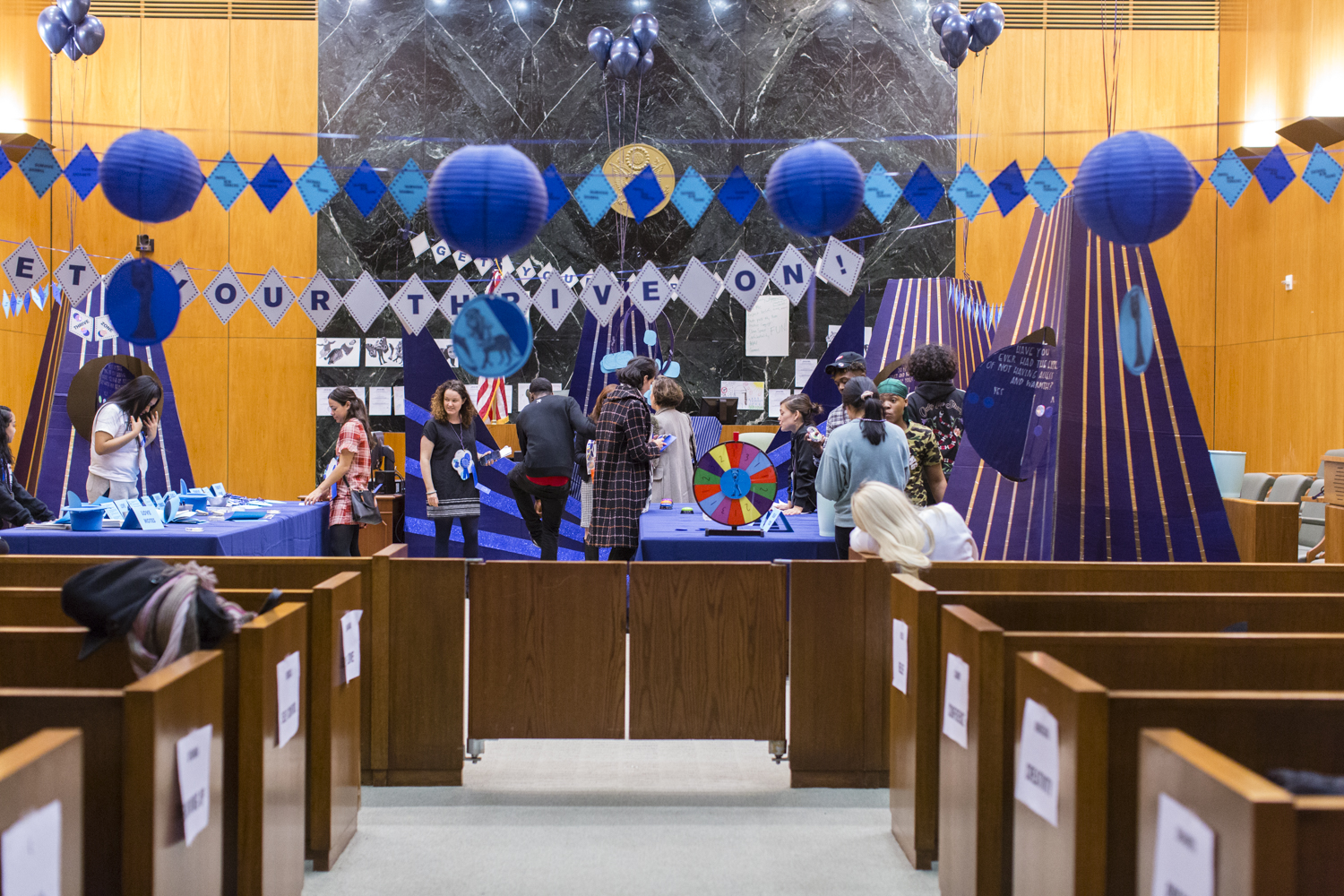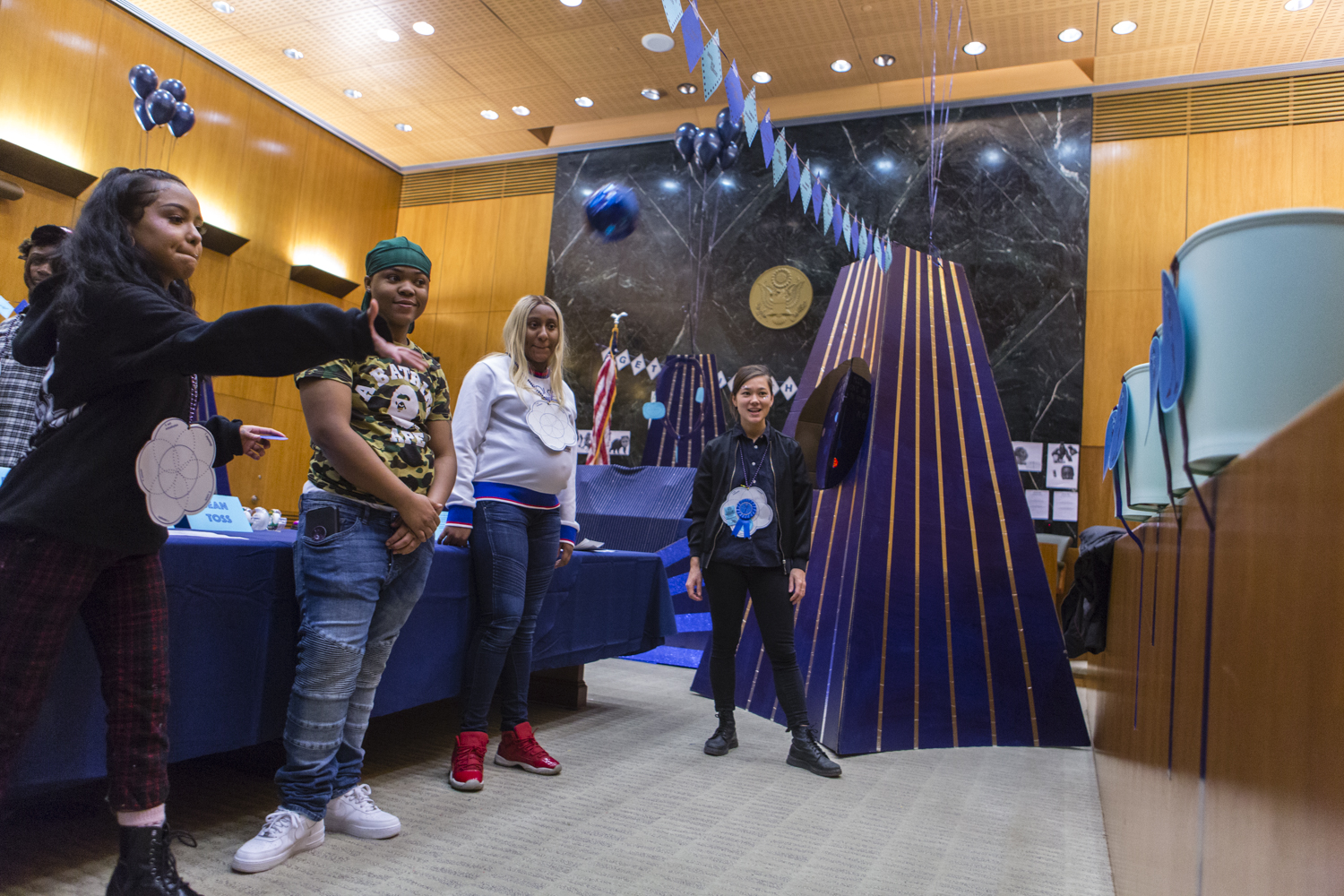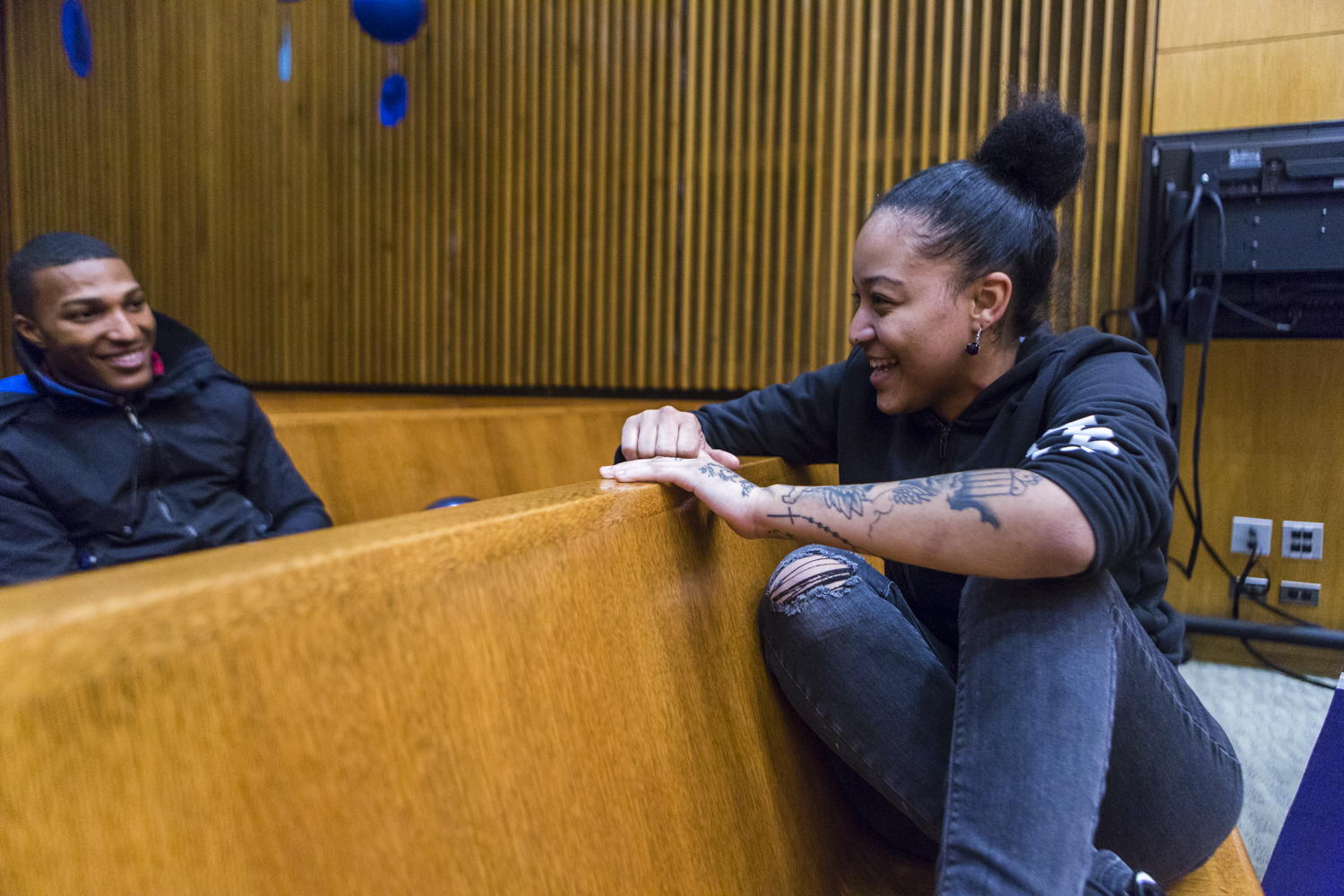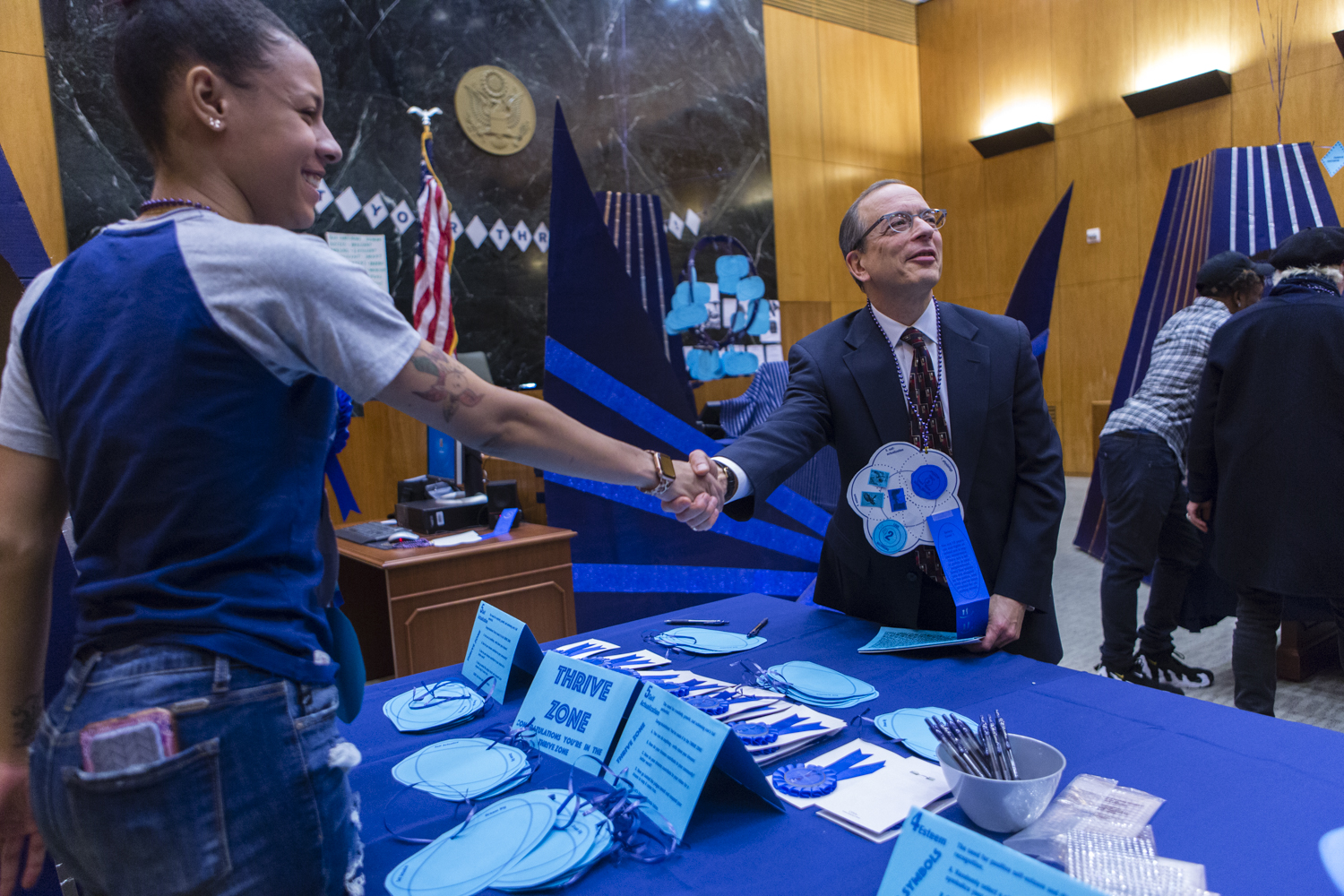Young New Yorkers, Art as Restorative Justice
Imagine the architecture of a courtroom—an institutional repressiveness pervades every corner, every pillar, every wooden banister. Before entering, there is a required security check: phones are not allowed inside. Our ability to examine the state disappears, while its ability to surveil us increases. The reality is that for many, particularly people of color, this surveillance begins outside of the courtroom and also disproportionately brings them back to it. Young New Yorkers is an initiative that attempts to change the status quo for youth facing these systemic imbalances. The arts-based diversion program for “court-involved young people” was founded in 2012 by New York’s Department of Probation artist-in-residence Rachel G. Barnard. Initially, Barnard conceived it as a public art project, supported by a fellowship awarded during her time at Columbia University’s School of Architecture. The idea was that by repositioning art not only as serving an aesthetic function but also as a useful tool for personal and social change, Young New Yorkers could give teens a second chance in the court system as well as give them a positive outlook about their worth within the community.

In Young New Yorkers’ early days, Barnard had been meeting bi-monthly with a cohort of artists, community workers, and criminal legal professionals discussing what the core values of the project should be. During those meetings, a defense attorney kept suggesting it could be a court-mandated program led by court-involved youth instead of a small-scale public art project. When asked how Young New Yorkers was implemented, Rachel explains: “I put on a blazer and some local defense attorneys escorted me into court before it opened.” “I approached Judge Gubbay as he was setting up his bench and told him I was fully funded and that we had a diversion program. He quickly introduced me to some court administrators, and six weeks later we launched our first eight-week diversion program.”
With support from district attorneys, prosecutors, judges, and Brooklyn Defender Services, Young New Yorkers began. Since the very beginning, Young New Yorkers held their exhibitions in the space of the courtroom, where teens were able to present their work directly to the judge’s bench. This cutting through of the established status quo of criminal institutions allows teens to reclaim the power they are usually stripped of upon entering the courtroom. The program’s activities for teens include listing and discussing their aspirations and dreams, practicing kindness and community, and creating self-portrait collages. Through means of artistic self-representation, Young New Yorkers’ students open up a gap for a regularly discriminatory criminal system to recognize them as human and not just a list of alleged offenses on a sheet of paper.

The program takes a special interest in the power balance established between the judge, painted as a figure of the state, versus the minor, painted as a criminal, and acknowledges the youth’s need for self-preservation. How is a child meant to vouch for themselves when they are criminalized before they’re even old enough to vote? How can this criminalization, which becomes internalized in and disproportionately affects New Yorkers of color, be counteracted and unlearned in not only the mind but in the institutions themselves? Young New Yorkers works within the system to address these questions. The program equips teens and young people with tools for self-care, self-respect, and self-expression.
“They [the judges and prosecutors] have an opportunity to re-meet a young person beyond their rap sheet. Through their own creative self-representation, through their artwork, this shifts the culture of the courtroom and tends to lead to better outcomes for young people,” explains Barnard.

As the program expanded, so did the spaces for various exhibitions. Beginning with a one-day program, teens worked in the courtroom opposite Judge Gubbay’s chambers and returned by the end of the day to present their work and have their cases dismissed and sealed. These programs usually concluded with a pizza party in the judge’s chambers after the exhibitions—but as the program grew, the number of teens participating became too large.
“The creativity, effort, and time that goes into the making of a Young New Yorkers exhibition is now exponential,” says Barnard. “Attendees typically include prosecutors, judges, and other criminal justice workers, with many return visitors. Judge Gubbay still comes to almost every exhibition even after seven years.”

With a background in architecture, Barnard was interested in how to manipulate institutional infrastructure to Young New Yorkers’ advantage, focusing not only on the action of a teen presenting artwork to a judge, but also on how the surrounding visuals can influence the broader experience. Their goal is to create a playful, funky, almost tacky aesthetic within the criminal justice system’s institutional spaces, with an aim to disrupt how the mind and body are conditioned to behave and react to these types of places. In one example, Barnard describes turning the courtroom into a “tattoo parlor”—teens gave attendees such as prosecutors of the court “tattoos” with eyeliner. This human interaction between bodies activated art’s ability to shift discretionary practices. Successful exhibitions such as these contribute to even more successful outcomes; the program’s website states that “research shows [YNY] participants’ re-arrest rates to be notably lower than similarly situated teens in Brooklyn and the national average.”

In a country where the goal of institutional rehabilitation has been long abandoned, the art created at Young New Yorkers is redefining what restorative justice can do for a community. By creating a different reason to gather in a heavily institutional, typically anxiety-inducing kind of space, and mixing teens from the community with figures of legal authority, different positive kinds of interaction between the two groups can occur—ones that lessen the status quo’s hierarchical boundaries. At a Young New Yorkers exhibition, one does not find the judge behind their bench, towering above these young kids, but rather the bodies exist on an equal playing field. This motion forces a deeper connection and helps to dismantle race, class, gender hierarchies, and internal competition within the court system. There is always more work to be done, but Young New Yorkers is an inspiring and viable alternative for young people.
Alyssa Weilenman is an artist and writer living in Brooklyn, New York.